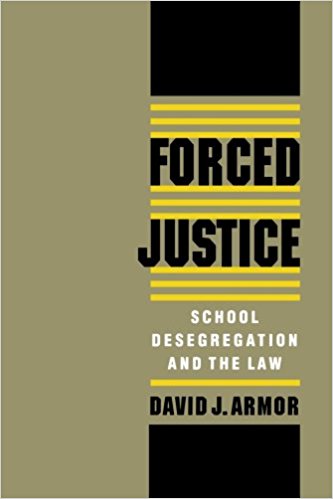In 1954, the Supreme Court held in Brown v. Board of Education that the state-sponsored segregation of children in public schools was a violation of the Equal Protection Clause of the 14th Amendment, and thus unconstitutional. The Court reasoned that segregation “generates a feeling of inferiority . . . that may affect their [black children’s] hearts and minds in a way unlikely ever to be undone.” The decision, based more on fashionable social science than law, overturned a 58-year-old precedent and shocked much of the nation.
Brown was the first salvo of an all-out assault on what remained of our dual system of government. The power of the judiciary expanded exponentially—courts replaced local elected school boards and began to make decisions regarding the hiring of faculty, busing, school locations, resource allocation, and the placement of public housing. According to the conventional wisdom, this was necessary because mixed-race schools would be socially and educationally beneficial to all concerned. Integration would raise black self-esteem, eliminate prejudice through racial contact, and improve black academic performance. Judges have now had 42 years to engineer a better world, and are not done yet, as many school districts are still under court supervision.
In Forced Justice: School Desegregation and the Law, David J. Armor sheds light on the results of this experiment. Armor examines numerous studies involving key topics such as black self-esteem, housing preferences, academic performance, and white flight. The conclusions he draws cast serious doubts on the desegregation policy of the past 40 years.
To begin with, Armor assembles results from studies that question the influential work of Kenneth and Mamie Clark. The Clarks’ doll studies, conducted in the 1930’s, concluded that black children’s preferences for white dolls was evidence of low self-esteem. The results of the study were frequently cited in the appeals process leading to Brown, which clearly built on the belief that low black self-esteem led to lower black academic performance. Armor cites research from the immediate post-Brown era—a time before any real desegregation took place—showing that segregation does not appear to harm the self-esteem of blacks, and that “desegregation not only fails to improve black self-esteem but may in fact lower it.”
Armor goes on to tackle myths surrounding housing segregation and its causes. The standard belief is that blacks desire to move into predominately white neighborhoods but are prevented from doing so because of discrimination. According to studies cited by Armor, however, black and white preferences—not discrimination—lead to most housing segregation. Black respondents preferred neighborhoods that were half black and half white and tended to avoid neighborhoods that were predominately white, whereas two-thirds of the white respondents said they would try to leave any neighborhood that became 50 percent black. Simple arithmetic dictates that it is impossible for most blacks (making up less than 13 percent of the population) to live in 50-50 neighborhoods. Moreover, neighborhoods that are truly integrated (predominately white) are unacceptable to blacks. This Catch-22 makes housing integration, and consequently neighborhood school integration, impossible.
Finally, Armor looks at black academic performance and desegregation. Segregated schools, according to Brown, were “inherently unequal” and responsible for poor academic performance by blacks. The statistical evidence shows that scholastic gains have been as large for segregated blacks as for desegregated blacks. After examining the data. Armor concludes that “Enhanced academic achievement is probably the last reason why any agency or individual should endorse desegregation policies.”
The evidence he presents makes the case that the desegregated utopia promised by the left is but a specter. There is, however, a major flaw in this important work since, his own research to the contrary. Armor refuses to question the wisdom behind desegregation itself. He proposes “equity choice”—entailing ever more extensive governmental interference in the form of vouchers, increased spending on magnet schools in urban areas, and affirmative action-like criteria for student transfers—to replace current desegregation policies. Never does it occur to him that communities ought to be free from all schemes of social engineering. Though political correctness keeps the blinders in place over the author’s eyes. Forced Justice should spark discussion of the desegregation dilemma in other less enlightened circles.
[Forced Justice: School Desegregation and the Law, by David J. Armor (New York: Oxford University Press) 271 pp., $35.00]

Leave a Reply